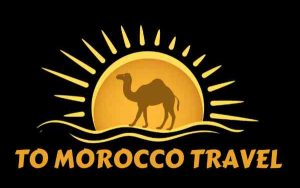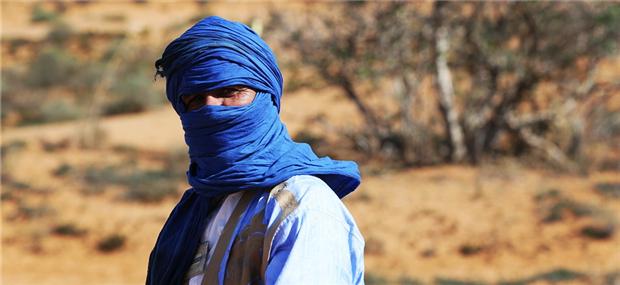BERBERS NOMADS MOROCCO AND TUAREG PEOPLE
Berbers nomads Morocco, Berbers (Amazighs, Imazighen, in Berber Language) are a North African ethnic group.
OVERVIEW ABOUT BERBERS NOMADS MOROCCO
Morocco, a land of vibrant colors and rich cultural heritage, is home to an ancient and fascinating group of people known as the Berbers nomads Morocco. These wandering tribes have been traversing the vast desert landscapes and mountainous regions of North Africa for centuries, leaving behind a trail of captivating stories and traditions. In this blog, we embark on a virtual journey to uncover the life and culture of the nomads of Morocco, gaining insight into their unique lifestyle, customs, and the challenges they face in the modern world.
WHO ARE TUAREG PEOPLE?
The Tuareg are renowned for their nomadic lifestyle and have historically been skilled traders and travelers across the vast desert regions. They are known for their distinctive traditional attire, which includes indigo-dyed robes and headwraps, as well as their striking silver jewelry.
In terms of language, the Tuareg speak various dialects of the Tamahaq language, which belongs to the Berber branch of the Afro-Asiatic language family.
The Tuareg have a long and complex history, marked by their struggles for independence, cultural preservation, and recognition within the countries they inhabit. In some regions, they have engaged in armed movements seeking greater autonomy or independence, most notably in Mali and Niger.
ORIGINS OF BERBERS NOMADS OF MOROCCO
The Berbers, also known as Amazigh people, are an indigenous ethnic group that has a long history in North Africa, including Morocco. Their origins can be traced back thousands of years, and they have a rich and complex history.
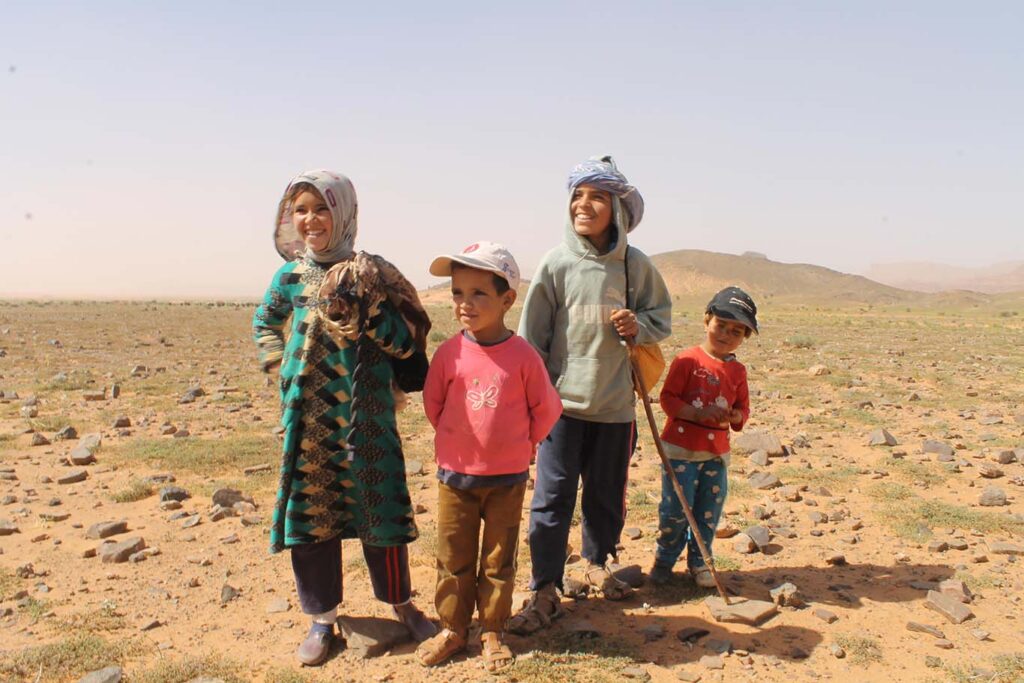
The exact origins of the Berbers are not entirely clear, as their history predates written records, and much of what is known about them comes from archaeological evidence, linguistic studies, and later historical accounts from various civilizations that interacted with them. It is believed that the Berbers have inhabited North Africa for at least 4,000 years, and possibly longer.
One prevailing theory is that the Berbers are descendants of the prehistoric populations of North Africa. They are believed to be one of the indigenous groups that lived in the region before the arrival of the Arab conquest in the 7th century AD. Their culture and language have unique features, distinct from the Semitic languages of the Arab population.
Throughout history, the Berbers have occupied various regions of North Africa, including present-day Morocco. They were known for their nomadic lifestyle, living in different geographical areas and adapting to diverse environments, such as the mountains, deserts, and coastal regions.
The Berbers’ history in Morocco is marked by interactions with various civilizations and cultures, including Phoenicians, Romans, Vandals, Byzantines, and Arabs. They resisted several attempts at conquest and assimilation, maintaining their distinct identity, language, and cultural traditions.
In Morocco today, the Berbers play a significant role in the country’s cultural diversity and heritage. Their unique language, Tamazight, is recognized as one of the official languages of Morocco alongside Arabic. Efforts have been made to preserve and promote their cultural heritage and identity in modern times.
LIFESTYLE OF THE BERBERS NOMADS OF MOROCCO
the Berbers nomads Morocco have a rich and diverse cultural heritage, and their lifestyle, including that of the nomadic Berbers, is shaped by their historical traditions and the geographical landscapes they inhabit.
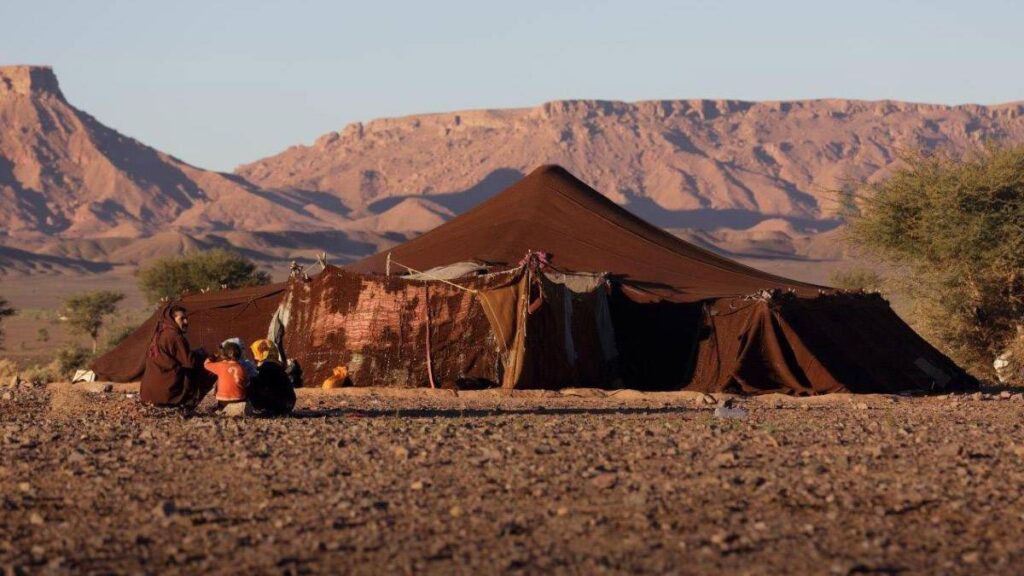
Nomadic Lifestyle: Some Berber tribes in Morocco still maintain a traditional nomadic lifestyle, moving with their herds and flocks across the country’s vast and varied terrains. Nomadism allows them to find fresh pastures and water sources for their animals, adapting to the changing seasons and preserving their cultural identity.
Tents and Shelters: The Berber nomads traditionally live in tents made of woven goat hair or wool called “beldi.” These tents are designed to be portable, allowing them to be easily moved as the tribe migrates. While some nomadic communities continue to use traditional tents, others may have adopted more modern materials for shelter.
Animal Husbandry: Animal husbandry is a significant aspect of the Berber nomadic lifestyle. They raise livestock such as sheep, goats, and camels, which provide them with food, clothing, and transportation. The nomads have a deep connection with their animals and depend on them for their survival.
Migration Patterns: The timing and routes of the Berber nomads’ migrations vary depending on the changing seasons and the availability of resources. During the summer, they may move to higher altitudes, where it’s cooler and there is abundant grazing for their animals. In the winter, they might move to lower altitudes or closer to oases for better access to water and shelter.
Traditional Crafts: The Berber nomads are known for their craftsmanship, creating various handicrafts using natural materials. They craft rugs, textiles, pottery, and jewelry, showcasing their artistic skills and preserving their cultural heritage.
Communal Lifestyle: The Berber nomads often live in extended family groups, maintaining strong communal ties. These groups work together to manage their livestock, share responsibilities, and support each other through the challenges of nomadic life.
Interaction with Modern Society: In recent years, some Berber nomadic communities have started to settle in permanent villages due to various factors such as modernization, urbanization, and changes in land use policies. This has led to a gradual decline in the traditional nomadic lifestyle in certain regions.
CULTURE AND TRADITIONS OF BERBERS NOMADS MOROCCO
The Berber nomads of Morocco, also known as the Amazigh people, have a rich and diverse culture that is deeply rooted in their nomadic lifestyle. They have historically inhabited the mountainous and desert regions of North Africa, including Morocco, Algeria, Tunisia, Libya, and other neighboring countries. Here are some aspects of their culture and traditions:
Language: The Berbers nomads Morocco have their own distinct language, known as Tamazight or Berber, which is a part of the Afroasiatic language family. However, Arabic has become the dominant language in many Berber communities, particularly in Morocco.
Tribal Structure: The Berber society is organized into various tribes, each with its own customs, dialects, and traditions. The tribes play a significant role in shaping the identity and social structure of the Berber people.
Traditional Clothing: The traditional attire of Berber nomads varies depending on the region, but it often includes loose-fitting garments that are well-suited for the desert and mountainous environments. Colorful fabrics and distinctive jewelry are commonly worn as well.
Cuisine: Berber cuisine reflects the nomadic lifestyle and the availability of local ingredients. It often includes dishes made from lamb, couscous, dates, and various aromatic spices. Tea, particularly mint tea, is an essential part of Berber hospitality and social gatherings.
Music and Dance: Berber music and dance are integral to their culture and are often performed during festivals, celebrations, and other special occasions. The traditional music is characterized by its unique instruments, including drums, flutes, and stringed instruments.
Folklore and Oral Tradition: Berber nomads have a rich tradition of storytelling, with tales and legends passed down orally from generation to generation. These stories often contain moral lessons and explanations of natural phenomena.
Festivals and Celebrations: The Berber nomads celebrate various religious and cultural festivals throughout the year. These festivals usually involve music, dance, traditional games, and communal feasting.
TRADITIONAL LIVELIHOOD OF THE BERBERS NOMADS MOROCCO
For centuries, the Berber nomads Morocco have relied on traditional livelihoods deeply connected to the harsh desert landscapes they inhabit. As skilled herders and traders, they have practiced a semi-nomadic lifestyle, moving their livestock, including goats, sheep, and camels, in search of grazing grounds and water sources. This mobility allows them to adapt to the ever-changing conditions of the Sahara and Atlas Mountains.
Their rich cultural heritage revolves around the art of weaving intricate rugs and textiles, a craft that has been passed down through generations. These exquisite creations not only serve as a source of income through trade but also showcase the Berber’s artistic expression and storytelling.
Furthermore, the Berber nomads Morocco engage in bartering and trade with neighboring communities, exchanging goods and services, which fosters social bonds and economic interdependence among different tribes. Though modernization and urbanization have impacted their traditional way of life, the Berber nomads continue to preserve and celebrate their unique customs and identity, keeping their ancient traditions alive in the face of change.
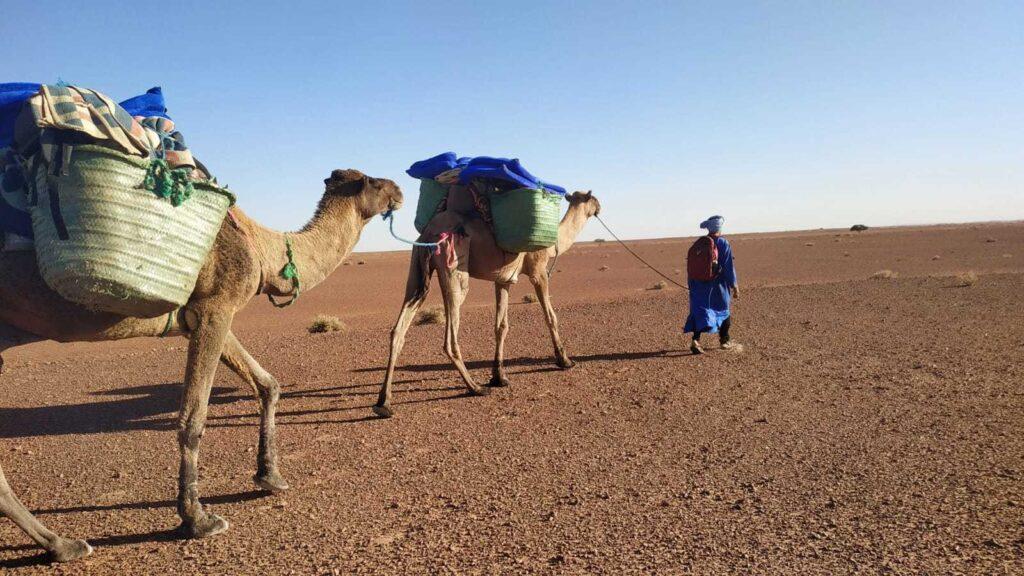
NOMARD TUAREG OR BERBERS OF MOROCCO TODAY
The Tuareg or Nomads Berbers Morocco who survive today do so in multiple ways. Those who maintain this way of life do so in camps with similar characteristics, although it is no longer so common for them to group together in small towns. There are those who opt for a semi-nomadism, alternating coexistence with their nomadic community and stays in urban centers.
If a family decides to definitively abandon their nomadism, they sell all their belongings and, once they arrive in the city, they display their survival instinct and reconvert themselves, taking advantage of acquired skills. It usually happens that the father is dedicated to construction.
It may also happen that only some members decide to separate. The most common is that the little ones, either on their own initiative or on the advice of their parents, put effort into their education, with the idea of continuing their training once they leave the camp and thus getting a specialized job.
And despite the fact that different decisions make physical disconnection inevitable, the Tuaregs are a people with a strong sense of family, forged on the basis of sharing the harsh conditions to which the desert subjects them. That is why communication between everyone perseveres, whatever the circumstances of each one.
VISIT THE BERBERS NOMADS OF MOROCCO
If you are interested to visit these Berbers nomads Morocco or Tuareg as they called, and have the real experience of these humble and most generous people in the world, as well as to get to know them very well, your in the right place right place to book your trip to explore these nation who still living the oldest life style that you can see by your eyes.
We had organised several top-rated tours to the Sahara desert of Morocco to visit this Tuareg or Berbers nomads Morocco’s south.
Here are some tours that we offer to visit the Shara desert of Morocco: tours from Marrakech, or tours from Fes, or tours from Casablanca.
